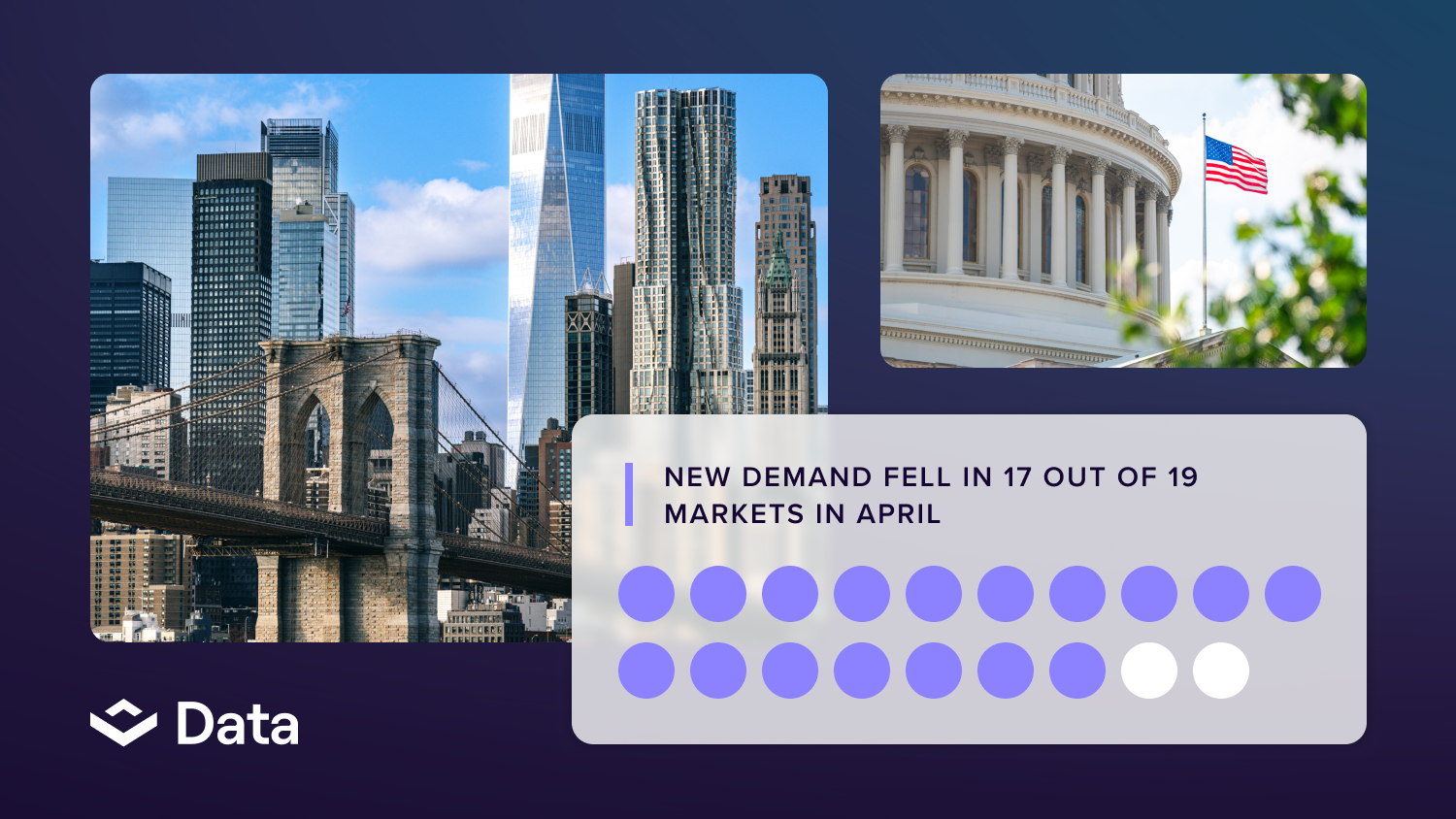The combination of remote work, high interest rates, and near-term maturities have put many owners and lenders in a difficult situation.
As loans come due and the cost of capital resets higher, debt and equity investors must decide whether a given asset's future return and risk prospects warrant an allocation.
Best-in-class owners and lenders have built data-driven cultures they leverage to validate their investment decisions and create an edge in all market environments. But data alone isn’t the game-changer. Leveraging tools like VTS Data that enable unbiased, real-time insights that inform winning lending and borrowing strategies is necessary.
VTS Data gives firms the earliest indicators of risk with insights that are 6 - 9 months ahead of traditional data sources. Predictive data from VTS mitigates the friction between owners and lenders and helps them reinvent their investment strategies with the most real-time information available.
Managing risk and returns in commercial real estate
In the current economic landscape, the relationship between owners and lenders is being tested. While both parties have a vested interest in the success of the investment, asset owners are tasked with the daily operations while their lenders expect timely interest payments or total repayment of the loan.
These separate perspectives for a mutually beneficial outcome can create friction when influenced by external sources like changes from the Federal Reserve, an international health crisis, or when referencing different data points.
Data should inform owners of their asset’s performance relative to the market while also providing a more nuanced picture than general news headlines. Without access to accurate market insights, both owners and lenders may form differing opinions on how to manage a maturing loan.
The role data plays in commercial real estate loan maturities
Almost nothing (aside from cash-on-hand) is more important than data when it comes to managing maturing loans.
Without access to information when and where it’s needed, owners and lenders are stuck using delayed insights. While this level of data has been the standard of the CRE industry for decades, backward-looking information causes slower (and sometimes misinformed) decision-making.
Thankfully, the timeliness of data has improved thanks to the advancement of CRE technology. In the market today, data is a game-changer for asset owners and lenders alike.
Asset owners are market experts with boots-on-the-ground market insight, particularly within their portfolios. However, owners might not have access to the market-wide information that affects lending decisions. For this reason, they rely on stale sources of information because it’s the closest thing they have to real-time insights.
For owners, data means:
- Advanced market-level insights: Market analytics provide owners with insights into demand and property valuations. It assists in hold/sell decisions as loan maturities approach.
- Streamlined communication: Up-to-date data ensures all stakeholders are aligned faster. In today’s market, where changes can come in an instant, being able to move quickly as an organization will be of utmost importance.
- Benchmark asset to peers: Understanding the market can help an owner understand how their asset is performing relative to its compset and submarket.
- Execute strategy: Monitor proposed deals with comps to confirm or pivot strategy and overall market/submarket exposure.
Lenders also rely on traditional data sources that are backward-looking in nature but prefer to stay at an arm’s length from the day-to-day operations of the asset.
They depend on the high-level view of data to tell them how the market and the asset are performing, and if things are bad, they may sit on the sidelines to deploy new capital until the environment improves.
For lenders, data means:
- Effective risk assessment: Lenders can use data to assess the current financial health and performance of the properties securing their loans. Monitoring key metrics such as occupancy rates, rental income, and property valuation helps gauge the owner’s ability to meet loan obligations.
- Access to early warning signals: Lenders can identify if a property's performance is deteriorating, allowing them to take proactive measures to mitigate risks and work with owners on solutions or approve a new strategy before a loan matures.
- Market trend analysis: Monitoring market trends helps lenders understand how economic conditions are affecting the local and national commercial real estate markets. This information helps them adjust their lending strategies, risk assessments, and decisions about refinancing or extending loans.
- Optimized portfolio management: With diverse portfolios of commercial real estate loans, lenders can use data to assess the overall health of their portfolio and identify potential areas of concern.
In both cases, data empowers informed decision-making, enhances communication between owners and lenders, supports risk assessment, and aids in planning for loan maturities.
Access to accurate, up-to-date information helps mitigate potential challenges and uncertainties, ultimately contributing to more successful outcomes for both parties involved.
Mitigating the risk of mature loans with VTS Data
Not only is actionable data necessary to managing loans, but unbiased insights are essential to informing effective lending and borrowing strategies.
VTS Data unlocks advanced, exclusive insights on what’s happening in the market, giving users insights that are 6 - 9 months ahead of traditional data sources. With the predictive nature of VTS Data, owners and lenders can reinvent their investment strategies with the most real-time information available.
Foster lender confidence
- Understand market performance: Uncover risks in real-time with VTS Data. With data that leads net absorption numbers by 6 - 9 months on average, you’ll always be ahead of your competition.
- Gauge portfolio competitiveness: Leverage data to showcase asset positioning and performance versus other assets in the market ahead of loan maturity. Understanding your competition position can increase lender confidence in the event a loan needs to be reworked.
- Craft powerful, realistic strategies: Underwrite winning strategies with confidence and establish yourself as a trusted market leader. Draft and revise a detailed capital investment thesis that drives business forward.
Optimize capital allocation
- Gain data-driven precision: Embrace and hone in on where demand in a market truly lies and ensure your capital reinvestment yields the highest returns.
- Prove your case to stakeholders: Secure buy-in with real-time deal economics and gain the necessary approvals for your initiatives.
- Stay ahead of the competition: Space competition is high in all markets. Use data to anticipate trends, adapt to changing tenant demands, and make strategic decisions that give you a competitive edge.
Manage capital despite scarcity
- Unblock decisions with empirical data: Remove skepticism surrounding demolition, combination, and pre-build decisions with real-time data that reveals the sweet spot of small tenant demand by size range.
- Inform reinvestment strategies: VTS Data provides quantifiable insights that justify your capital reinvestment decisions and assist in underwriting reinvested assets' rent increase potential.
- Put predictive rental rates to work: With detailed data on active negotiations, you can stay a step ahead of the competition, setting your space-level economics to be in line with where the market is and is trending, not where previous deals were signed.
VTS Data is the only solution that gives owners and lenders the earliest available measures of demand and deal economics. No more sitting on the sidelines. VTS Data helps craft forward-looking strategies based on real-time insights that can’t be found anywhere else.
Having the most real-time data helps all decision-makers get on the same page quicker. With faster access to better insights from VTS Data, owners and lenders can adapt to changing market conditions and navigate mature loans with ease.






